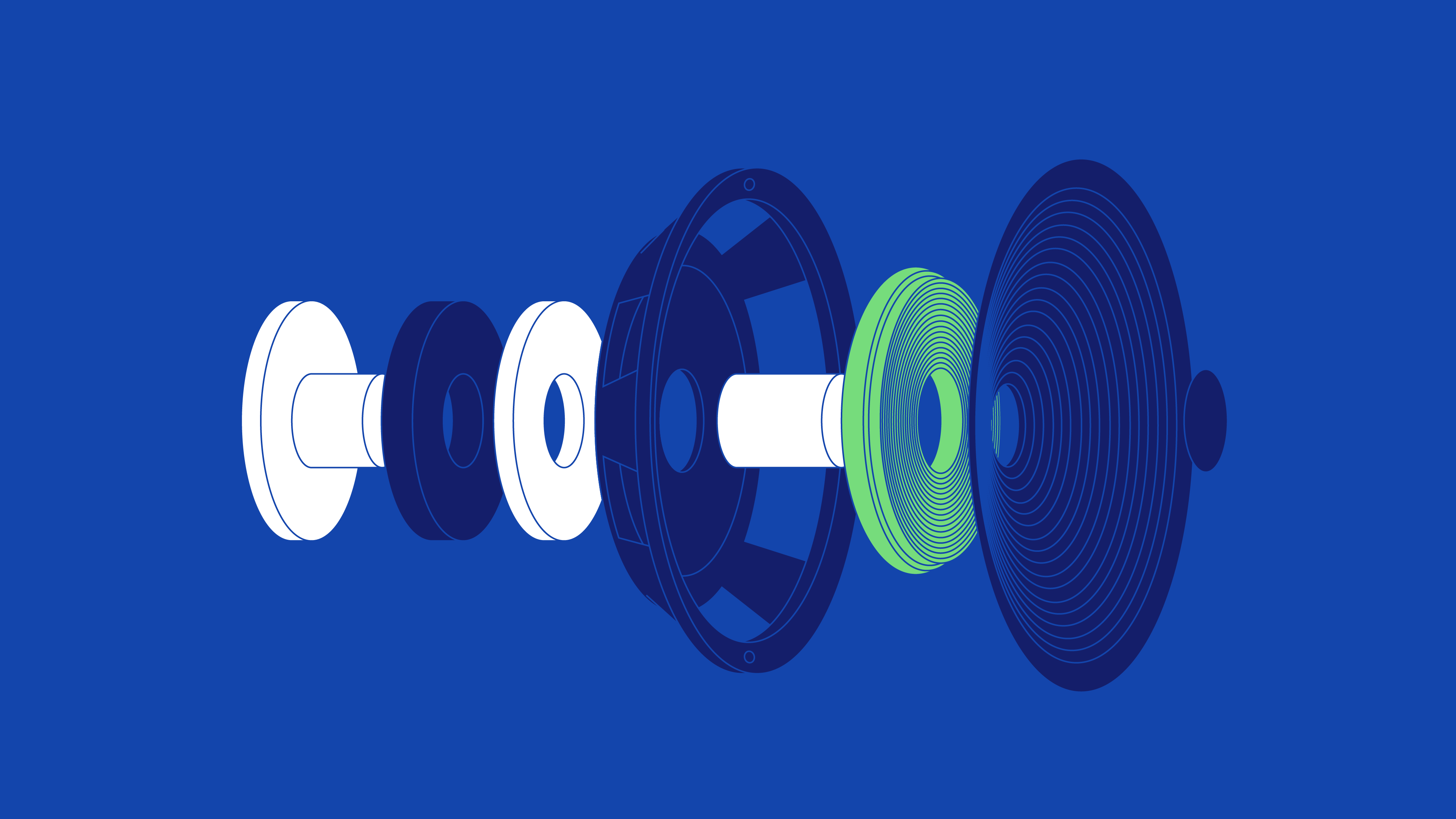How do speakers work? Understanding active and passive speakers
It’s difficult to imagine where music would be if we didn’t have PA systems, studio monitors, or headphones.
Since Alexander Graham Bell’s first patent in 1876, the loudspeaker has evolved to become a grounding force in music.
Today, you’ll find music production speakers in professional and home studios, almost everybody owns a pair of headphones, and live PA speakers pump out our favorite tunes at festivals, clubs, and bars.
But how do speakers work? What happens inside the speaker casing that allows them to broadcast sound? Well, the answer differs with different types of speakers, so we should talk about how amplifiers work too!
Then we can finish off with why the frequency response of a speaker is important to consider when you’re buying a pair of speakers.
- How does a speaker work?
- What is a speaker driver? How a speaker produces sound
- The different types of speakers
- How do speaker amplifiers work?
- Understanding the frequency response of a speaker
How does a speaker work?
A speaker driver converts electrical energy into sound (physical energy). A number of parts inside the speaker oscillate when an incoming electrical signal travels through them, and the oscillation of the parts converts the electrical signal into sound.
But you need to increase the strength of the signal so that it can provide enough power to the speaker components. And that’s why an amplifier is required in the signal chain.
For example, when you connect your phone through the auxiliary port, that auxiliary cable inputs an electrical signal that represents the audio. And any fluctuations in the intensity of the electrical signal corresponding to fluctuations in the audio.
Before a speaker can convert that electrical energy into motion, an amplifier needs to boost the signal strength. Then, with enough strength, the electrical signal drives the components within the speaker which convert the signal (with all of its fluctuations) into sound.
How a speaker creates sound
Sound is a wave of vibrating energy that travels outward in all directions away from a sound source. Sound waves are full of pressure, and they vibrate air molecules and change the amount of pressure in the air as they travel.
Therefore, a speaker cone must change the pressure in the air to create sound – and it does so by oscillating back and forth in a pump-like motion. The higher the volume the more intensely the speaker cone vibrates air particles while fluctuations in the electrical current are broadcast as sound (frequency content, dynamics, transient information, and so on).
The difference between a signal and sound
While sound is a physical wave of energy, a signal is an electrical energy. A stronger signal means a louder sound, and fluctuations in the signal correspond to the frequency content, dynamic range, and transient information of the sound source.
For example, microphones convert sound into electrical signals when sound waves vibrate their diaphragm. Though there is a difference between how mic types convert this motion into electrical current, the oscillation of this diaphragm creates a signal that corresponds to the frequencies, dynamics, and amount of energy there is in the sound wave.
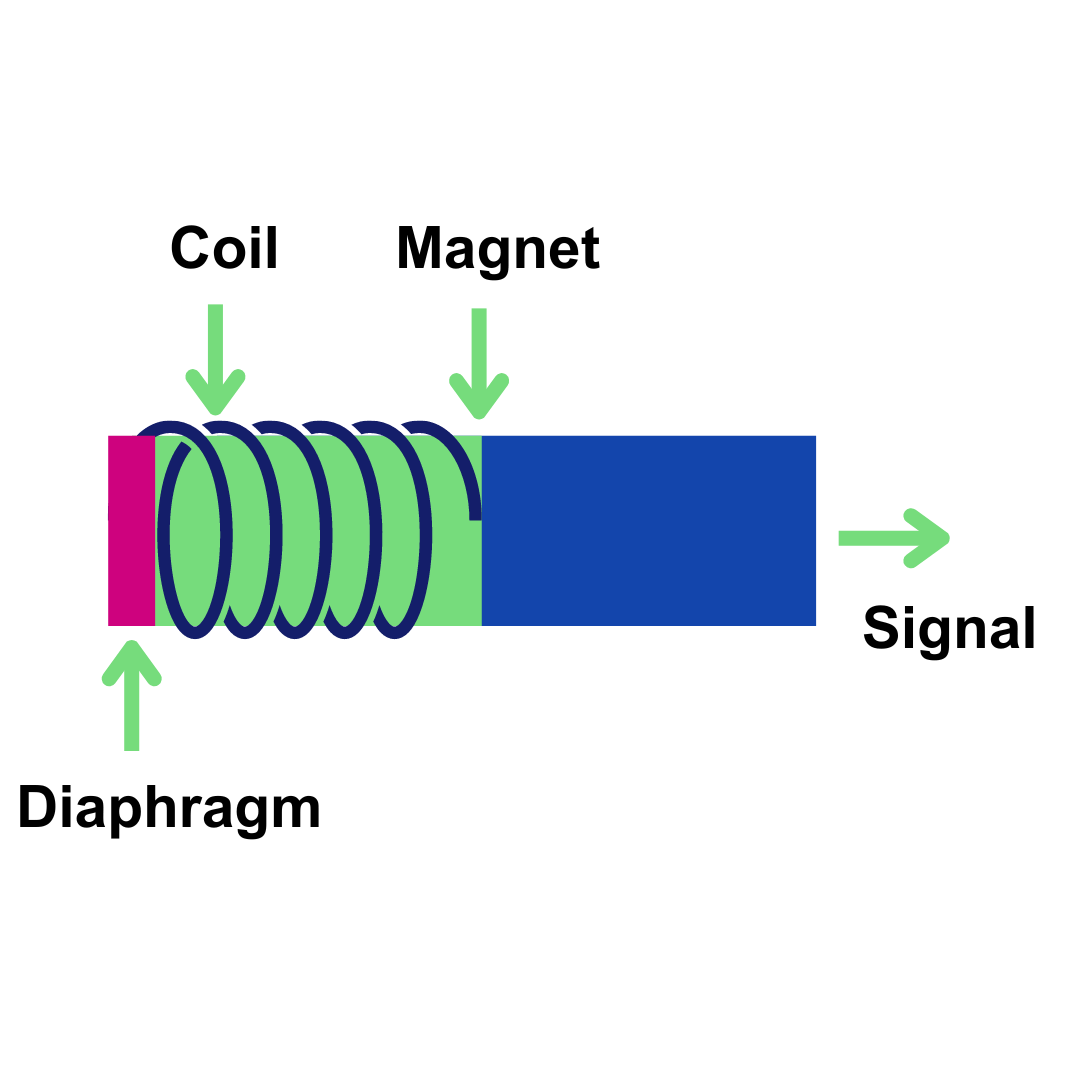
Dynamic microphone 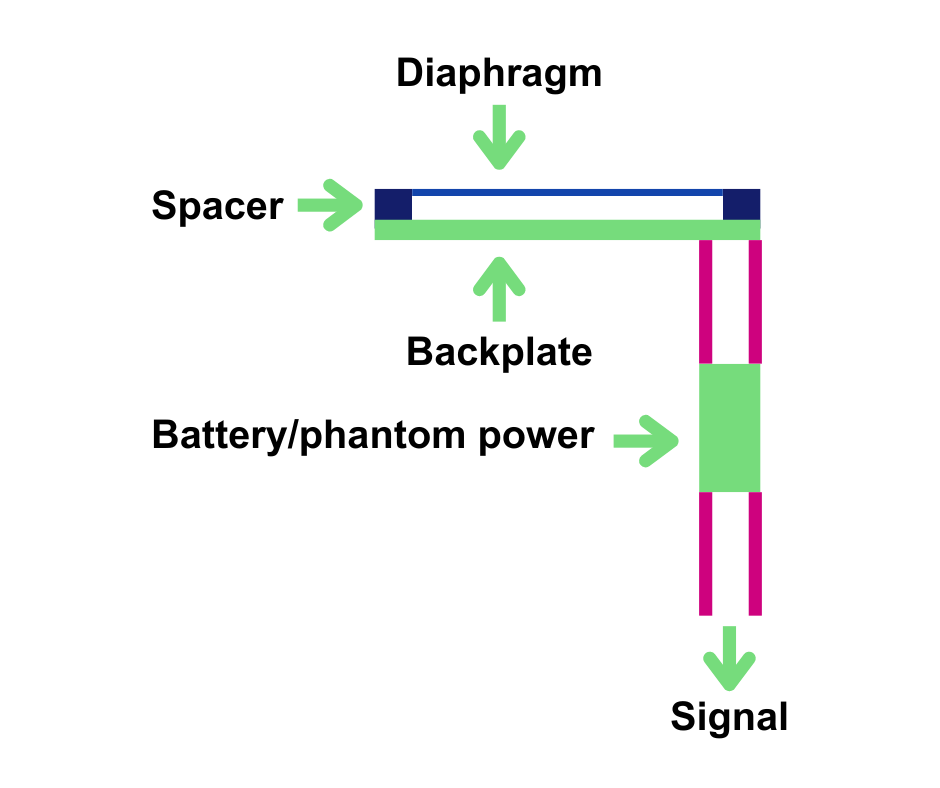
Condenser microphone
Speakers and microphones are opposites of one another because a speaker converts electrical energy into motion while a microphone converts motion into electrical energy.
Higher-frequency sounds to make the diaphragm oscillate faster while low-frequency sounds make it oscillate slower. Meanwhile, a higher frequency signal will oscillate a speaker cone faster and vice versa too.
What is a speaker driver? How a speaker produces sound
But, of course, the signal doesn’t vibrate the entire speaker. That would be a waste of energy, and speakers often aren’t the most efficient with power as it is.
Instead, electrical signals travel through and vibrate components of the speaker driver within the speaker cabinet.
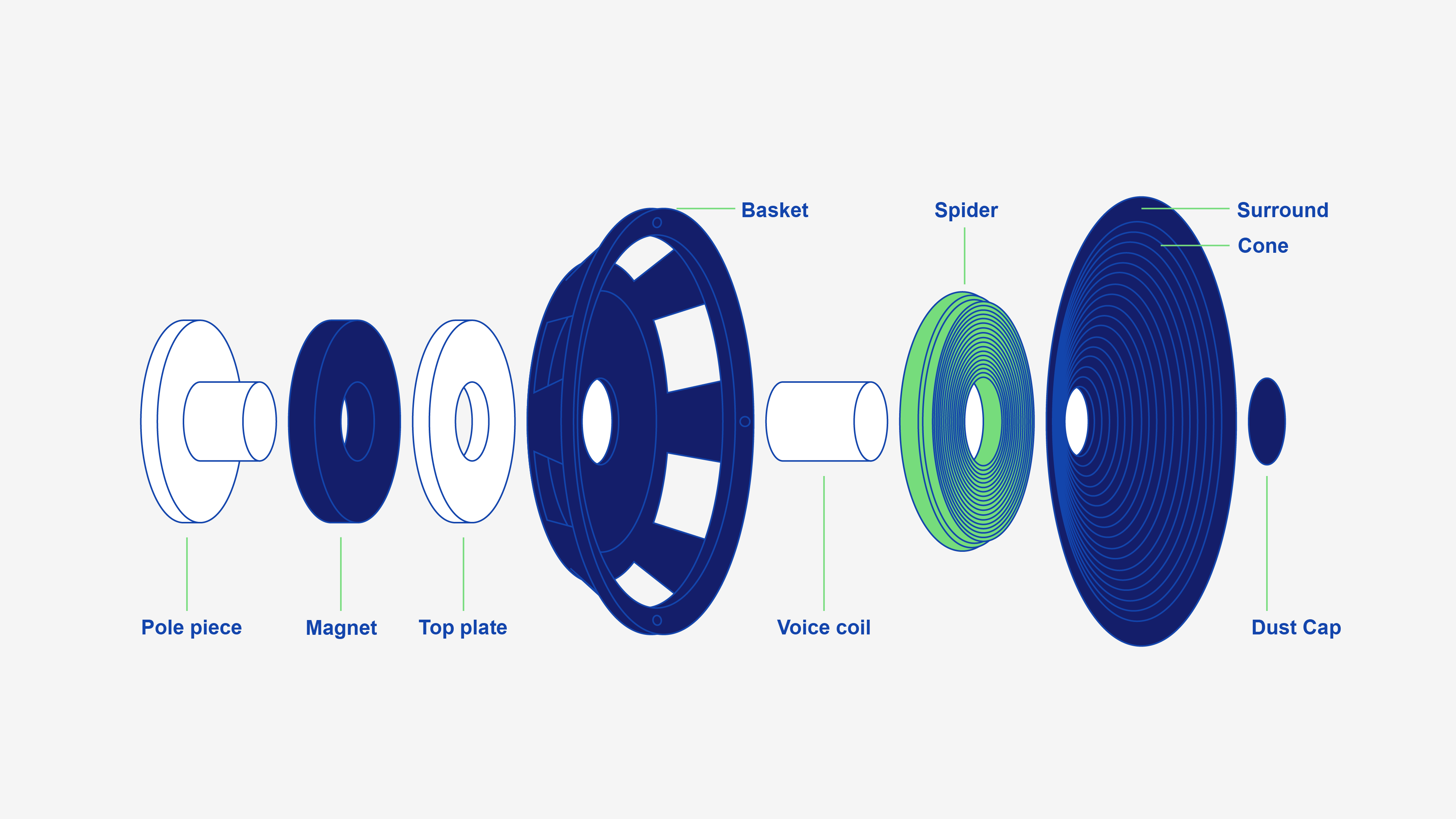
The cone is the visible component of the speaker driver, but a speaker driver is made up of a few components:
- A dust cap and cone (which oscillate and vibrate the air to produce sound)
- Behind the cone sits the spider that suspends the cone as it oscillates
- A voice coil oscillates close magnet (converting the electrical energy into motion, thus driving the speaker cone and dust cap)
- Holding these in place is the basket
- And behind the basket comes the pole and top plate
- Finally, a frame mounts everything together
So, an electrical signal drives a speaker driver which converts the electrical energy into motion and then into sound pressure.
When an electrical current travels through a coil of wire it produces an electrical charge. So as an audio signal travels through a voice coil (a coil of wire) in a speaker driver, the voice coil turns into an electromagnet.
Then, the voice coil is repelled and attracted to the fixed magnetic field of the magnet – creating the motion that drives the speaker cone.
The different types of speakers
Today, there are two types of speakers, and what differentiates them is where signal amplification sits in the signal chain.
How do passive speakers work?
Passive speakers like consumer hi-fi systems and some live entertainment systems require external signal amplification.
In any passive speaker setup all inputs whether a phone, a TV, DJ equipment, or anything must connect to the amplifier. Then the amplifier increases the strength of the signal so it can power the speaker drivers.
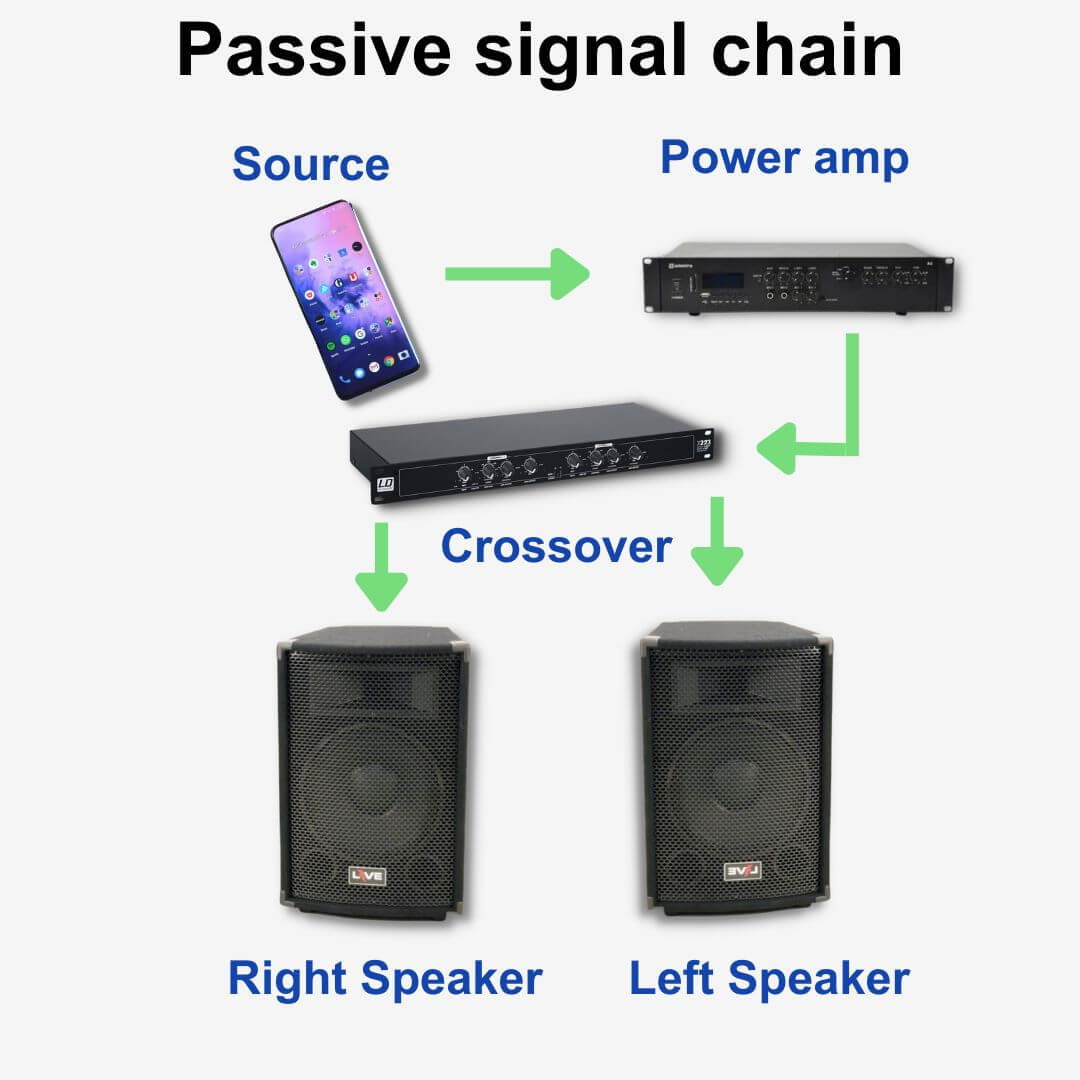
However, the signal must first go through a crossover filter before it reaches the speakers. A crossover filter splits the signal down into frequency bands after signal amplification, thereby sending high frequencies to tweeters and sending mids and lows to mid and bass woofers.
How do active speakers work?
In contrast, active speakers house a crossover and internal amplifiers inside the speaker case! Therefore, an active speaker is an all-in-one system that doesn’t require external amplification power.
Studio monitors are examples of active speakers because they feature an internal crossover and amplify the signal inside the speaker itself. So you only need to plug them into your mains power supply.
Below shows how an active signal chain works. Though it’s very similar, the crossover splits the frequencies before the signal is amplified – and it happens inside the speaker rather than outside of it.
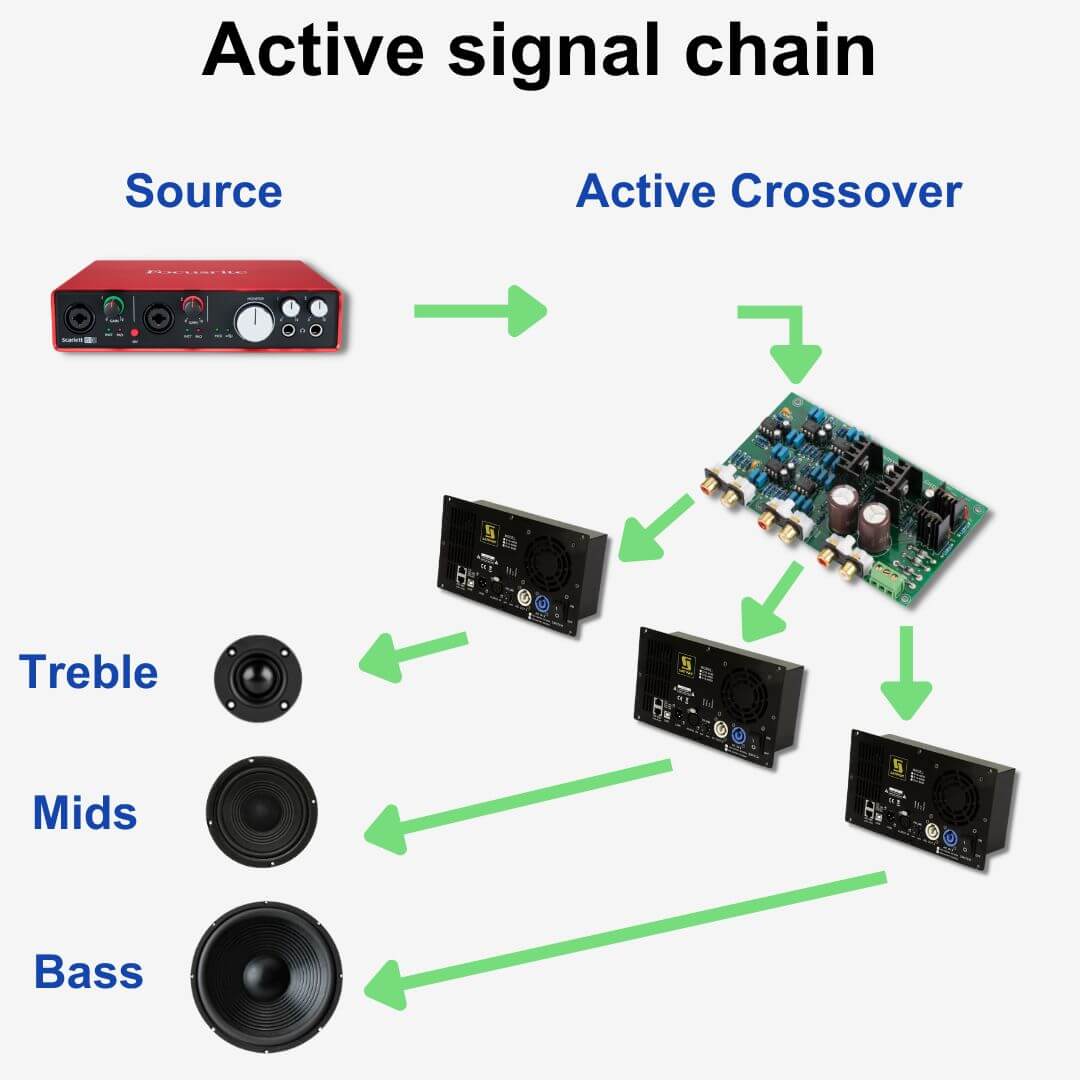
In your studio, your audio interface sends an electrical audio signal to your studio monitors – and the signal travels directly into the active crossover inside the speaker.
The crossover splits the signal into its frequency bands and then separate amplifiers increase the signal strength of each frequency band! This slight difference in signal flow makes for more precise frequency amplification, and this makes active speakers far more accurate at signal reproduction.
And, in short, that is why studio monitors are active speakers.
How do speaker amplifiers work?
An amplifier creates a brand-new output signal from the original input. Whether an external amplifier or inside an active system, an amplifier creates an amplified copy of the input signal. Then, the amplifier sends this amplified copy up through the signal path.
Amplifiers draw the power to create an amplified copy of an input signal from its power supply. Both battery-powered and amplifiers connected to mains electricity smoothen out the electrical signal to ensure it’s even, and without doing so the sound reproduction of the signal would be inaccurate.
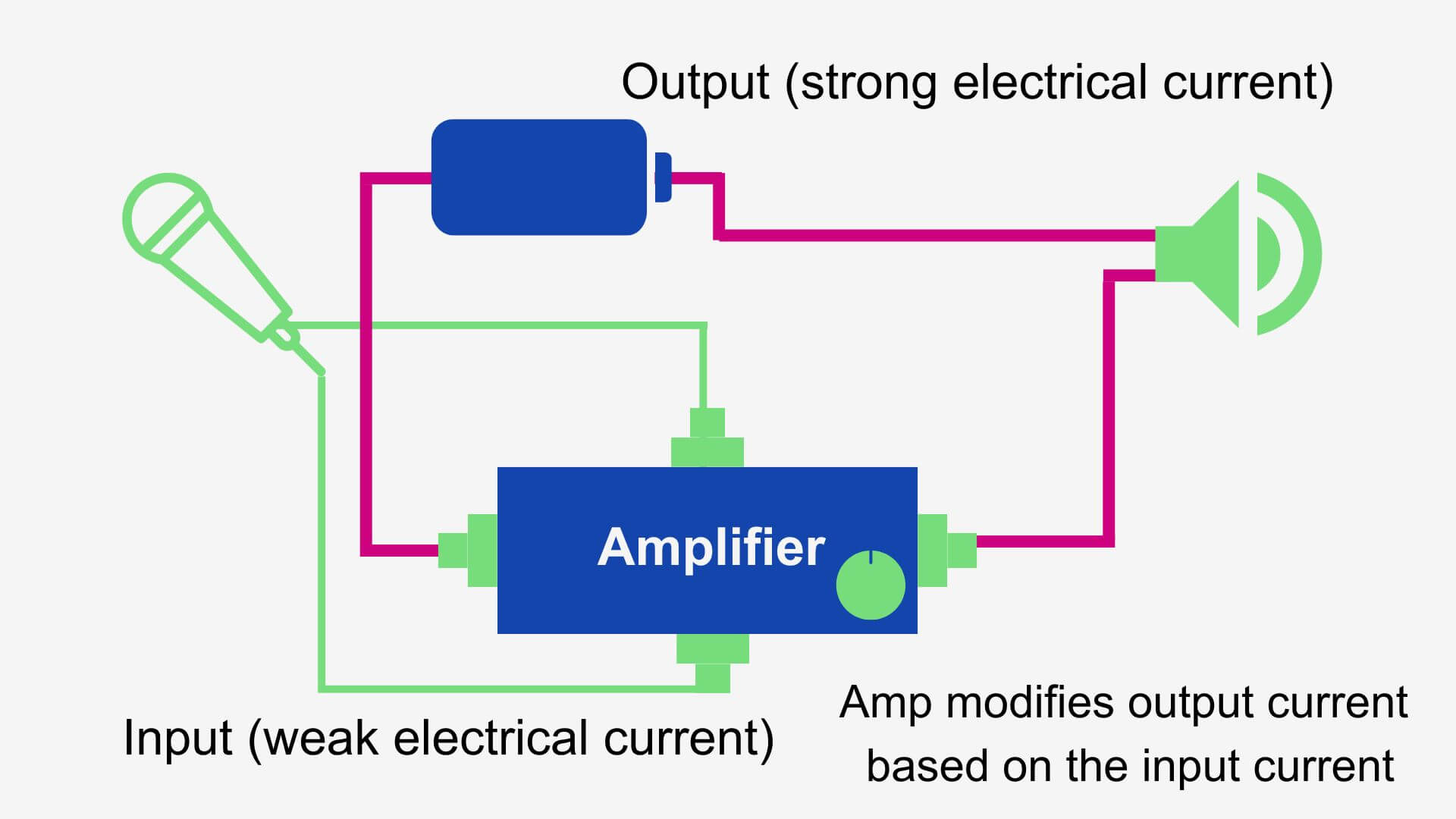
Furthermore, the input signal modifies the output signal in real time. As the electrical current is weak at the input stage, a pre-amplifier boosts the signal to ensure it has enough power to affect the output signal of the amplifier.
In fact, some amplifiers have multiple pre-amplifiers inside them to build up the desired voltage too!
Finally, any varying resistance that the input signal applies to the output of the amplifier allows the signal to reflect the original waveform of the input. This results in compression and rarefactions in the signal (which reflects the sound) and drives the oscillation of the voice coil inside the speaker driver.
Peak Power vs RMS Power
If you ever shop for a speaker system, it’s important to understand what peak power is. More importantly, you’ll want to know why RMS power (root mean square) is a better measurement of power.
Speakers push a determined amount of watts. And many manufacturers advertise the “peak power” of their system, but this isn’t the maximum power that a speaker can handle. Peak power represents what the system can handle when there are spikes in the audio.
But RMS power is the measure of continuous power, so RMS power is the measurement of continuous power that an amplifier can output or a speaker can handle.
Final thoughts: understanding the frequency response of a speaker
The frequency response of a speaker is how loud its output will be at different frequencies. And a flat frequency response means the speaker applies no or as few frequency cuts and boosts to any signal.
Active studio monitors strive for a flat frequency response as they aim to reproduce our projects in an honest way. If your track sounds good on speakers that have a flat response, it will sound good on any playback system.
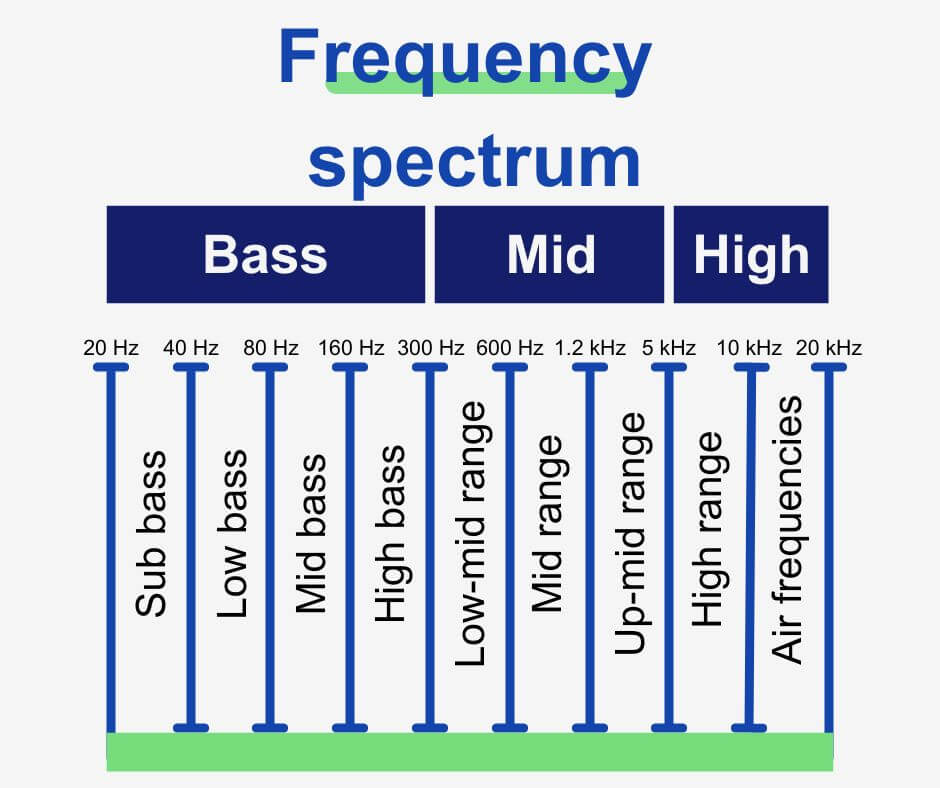
But if studio monitors have apparent frequency cuts/boost below 10 kHz then you’ll find it difficult to make music the way you want it to be heard unless you know what the speakers are cutting/boosting.
But many speakers, whether studio monitors or live PA systems, are not flat. Many lack the required power in treble and bass frequency groups (particularly the sub-bass region of 20 Hz to 40 Hz). And many speakers do have peaks or dips in their frequency response too.
A consequence of this is that some instruments in your music will sound louder or quieter in the final master than you want them to. However, let’s look at the facts here: there is a reason that speakers have these unfortunate characteristics.
In practice, a speaker frequency response would look something like this. Though this is an unrealistic example of a “flat frequency response”, a speaker with smaller drivers will suffer from frequency dips and spikes similar to the ones below.
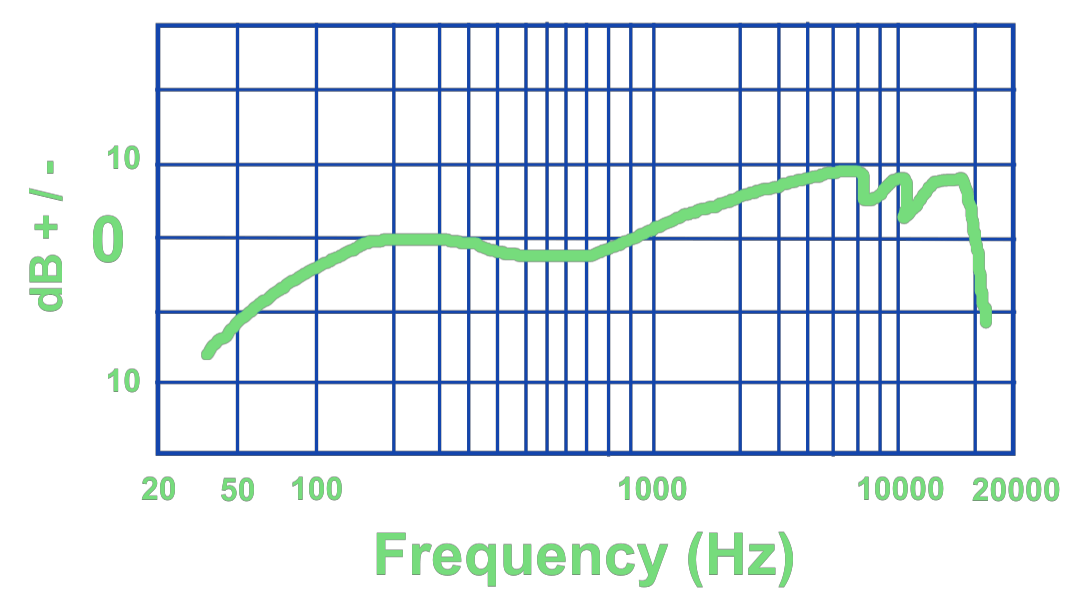
The threshold of human hearing stretches from 20 Hz to 20 kHz. That’s 10 octaves of frequency, and seeing as faster air pressure changes produce higher frequencies, a tweeter dome must oscillate very quickly to produce them.
And bass frequencies below 300 Hz require a woofer to push a lot of air. After all, you feel bass more than you hear it.
In summary, this is precisely why tweeters are small domes and woofers are large cones. To accurately produce all frequencies accurately from 20 Hz to 20 kHz with no alterations, a speaker would require multiple drivers, cones, and domes.
Unfortunately, speakers become unaffordable for many people at that point.
RouteNote Create offers premium samples at affordable subscription rates from as little as $2.99 for 100 sample credits!
Browse hundreds of thousands of royalty-free sounds right now and download one-shots, loops, FX & full sample packs from top producers.
